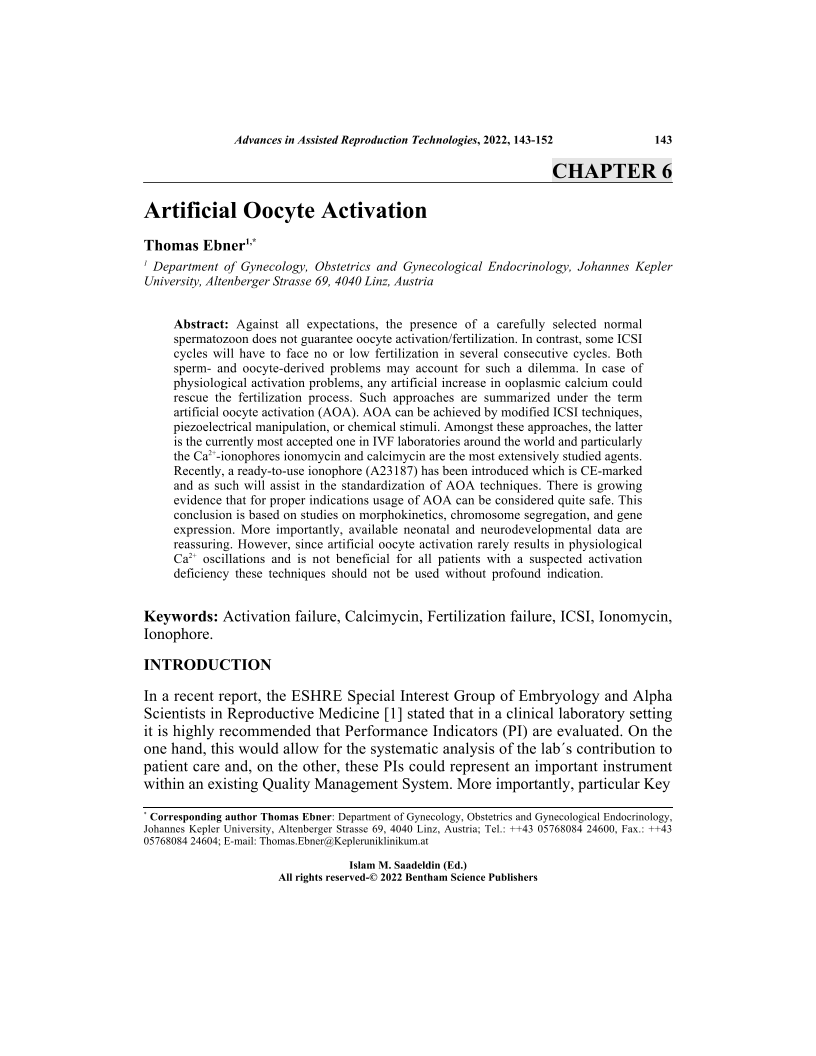Artificial Oocyte Activation

- By Thomas Ebner1
-
View Affiliations Hide Affiliations1 Department of Gynecology, Obstetrics and Gynecological Endocrinology, Johannes KeplerUniversity, Altenberger Strasse 69, 4040 Linz, Austria
- Source: Advances in Assisted Reproduction Technologies , pp 143-152
- Publication Date: August 2022
- Language: English
Artificial Oocyte Activation, Page 1 of 1
< Previous page | Next page > /docserver/preview/fulltext/9789815051667/chap6-1.gif
Against all expectations, the presence of a carefully selected normal spermatozoon does not guarantee oocyte activation/fertilization. In contrast, some ICSI cycles will have to face no or low fertilization in several consecutive cycles. Both sperm- and oocyte-derived problems may account for such a dilemma. In case of physiological activation problems, any artificial increase in ooplasmic calcium could rescue the fertilization process. Such approaches are summarized under the term artificial oocyte activation (AOA). AOA can be achieved by modified ICSI techniques, piezoelectrical manipulation, or chemical stimuli. Amongst these approaches, the latter is the currently most accepted one in IVF laboratories around the world and particularly the Ca2+-ionophores ionomycin and calcimycin are the most extensively studied agents. Recently, a ready-to-use ionophore (A23187) has been introduced which is CE-marked and as such will assist in the standardization of AOA techniques. There is growing evidence that for proper indications usage of AOA can be considered quite safe. This conclusion is based on studies on morphokinetics, chromosome segregation, and gene expression. More importantly, available neonatal and neurodevelopmental data are reassuring. However, since artificial oocyte activation rarely results in physiological Ca2+ oscillations and is not beneficial for all patients with a suspected activation deficiency these techniques should not be used without profound indication.
-
From This Site
/content/books/9789815051667.chap6dcterms_subject,pub_keyword-contentType:Journal -contentType:Figure -contentType:Table -contentType:SupplementaryData105

